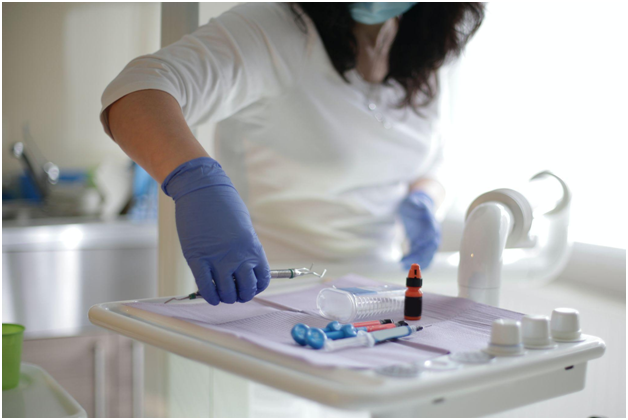It’s no secret that many of us are self-conscious about our veins. They can be difficult to see, and when they are visible, they often appear blue or purple. This can make them difficult to track, making it hard to know where to insert a needle when starting an IV.
That’s where vein viewers come in. Vein viewers are handheld devices that use infrared light to make veins visible by casting a real-time image of them on the screen. They can be used on patients of all ages, and they’re becoming increasingly popular in hospitals and clinics.
But are vein viewers worth the cost? Let’s have a detailed look.
What are Vein Viewers Exactly?
As we already mentioned, vein viewers are devices that use infrared light to illuminate veins beneath the skin. By making the veins more visible, vein viewers can help healthcare professionals quickly and easily find a suitable vein for injection.
Vein viewers work by shining infrared light onto the skin, which is then absorbed by the blood in the veins. The blood absorbs more light than the surrounding tissue, causing the veins to appear as dark lines on the surface of the skin. Vein viewers can be used on both adults and children, and there is no need for any preparation beforehand.
Simply hold the device against the skin and look for the illuminated veins. Vein viewers are a valuable tool for anyone who needs to regularly inject medication, and they can help to make the process quicker and less painful.
The Pros and Cons of Using Vein Viewers
To determine whether or not vein viewers are worth the cost, it’s important to consider both the pros and cons of using them.
Pros:
- Vein viewers can make it easier to find a vein, making the injection process quicker and less painful.
- They can be used on both adults and children, with no need for any preparation beforehand.
- Vein viewers can help to reduce the number of missed or unsuccessful injections.
- They make it easier to track the progress of an IV, making it less likely that the needle will become dislodged.
Cons:
- Vein viewers can be expensive, with some models costing over $1000.
- In addition, vein viewers can never ve 100% accurate, and there is always a risk that the devices will miss a vein or fail to identify one altogether.
How Much Does a Vein Finder Cost and Where Can You Buy It?
While vein finders can be helpful for both patients and medical staff, they can also be expensive. Depending on the model, a vein finder can cost anywhere from $500 to $5,000. Prices vary based on features like portability, battery life, and wavelength.
Some models even come with built-in laser pointers! While vein finders can be found online, they are usually only available through medical supply stores or distributors. So, if you’re looking for a vein finder, be prepared to pay a pretty penny. But hey, at least you won’t have to worry about finding a vein!
So, Are They Worth It?
So, are vein viewers worth the cost? The answer may depend on your individual circumstances. If you regularly inject medication, then a vein viewer could make the process quicker and less painful.
However, if you only occasionally inject medication, then a vein viewer may not be necessary. Ultimately, the decision of whether or not to purchase a vein viewer is one that you will need to make based on your own individual needs and budget.
How to Use a Vein Finder Like a Pro
While Vein Finders are most commonly used by healthcare professionals, they can also be used at home with little practice. Here are a few tips for using a Vein Finder like a pro:
- Start by cleaning the area where you’ll be using the Vein Finder. This will help to ensure an accurate reading.
- Next, hold the Vein Finder close to the skin and scan the area until you see a vein that looks suitable for injections or blood draws.
- Once you’ve found a vein, carefully insert the needle into the vein at a 90-degree angle.
With these simple steps, you can make vein finding a breeze!
FAQs
- How do vein viewers work?
Most devices use a near-infrared light source and a camera to capture an image of the vasculature beneath the surface of the skin. The blood in the vessels reflects back more light than the surrounding tissue, allowing the vessels to be seen in the images produced by the camera.
- Are vein viewers safe?
Yes, they are considered safe. The near-infrared light used by most devices is low intensity and not harmful to the skin.
- How accurate are vein viewers?
Vein viewer accuracy can vary depending on a number of factors, such as skin tone, depth of veins, and lighting conditions. In general, however, vein viewers are considered to be quite accurate, with studies finding accuracies ranging from 85% to 95%.
- What are some potential uses for vein viewers?
Vein viewers have a variety of potential uses in healthcare settings. They can be used to help find veins for venipuncture or intravenous catheterization, to aid in the administration of intramuscular injections, and to monitor vessel status in real-time during surgery.
- Are vein viewers expensive?
The cost of vein viewers can vary depending on the features and quality of the device. Generally speaking, however, they are not considered to be excessively expensive, with prices typically ranging from $500 to $5000.
The Bottom Line
So, are vein viewers worth the cost? If you’re looking for a quick and easy way to find veins, then the answer is probably yes. However, if you’re willing to put in a little bit of extra effort, there are other methods that will get the job done just as well.
In the end, it’s up to you to decide whether the convenience of a vein viewer is worth the price tag. But one thing’s for sure: vein viewers are definitely not a loss for money.




